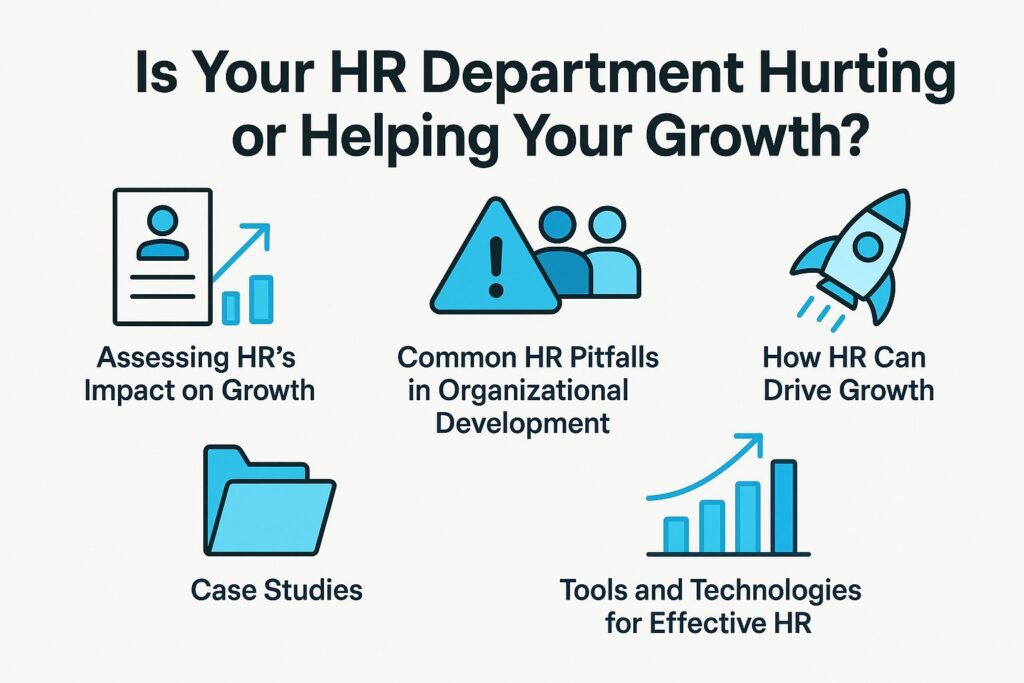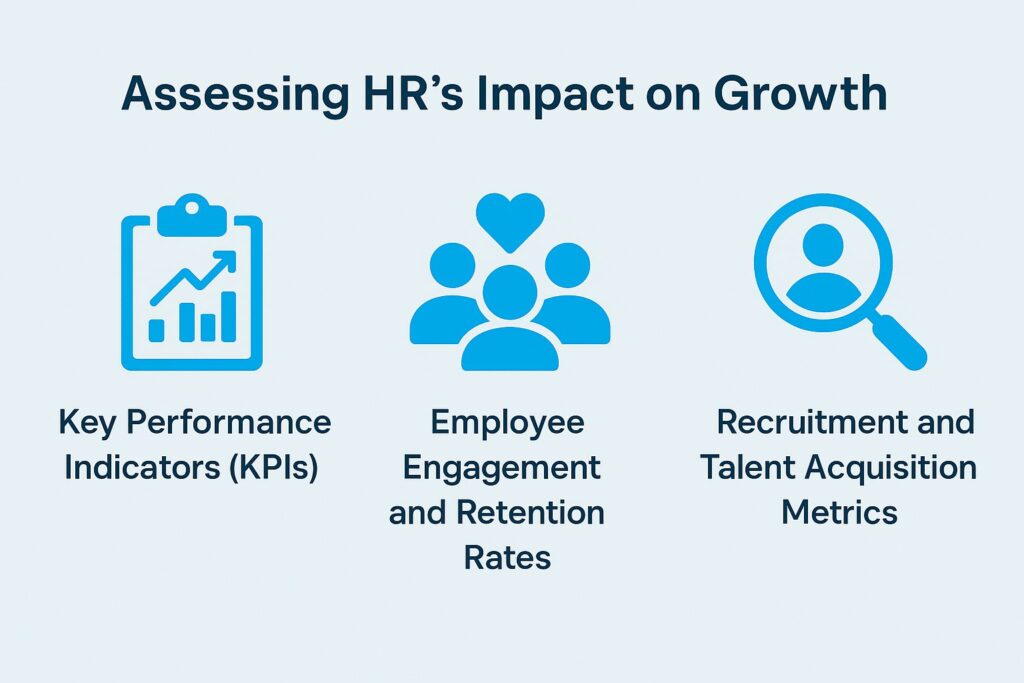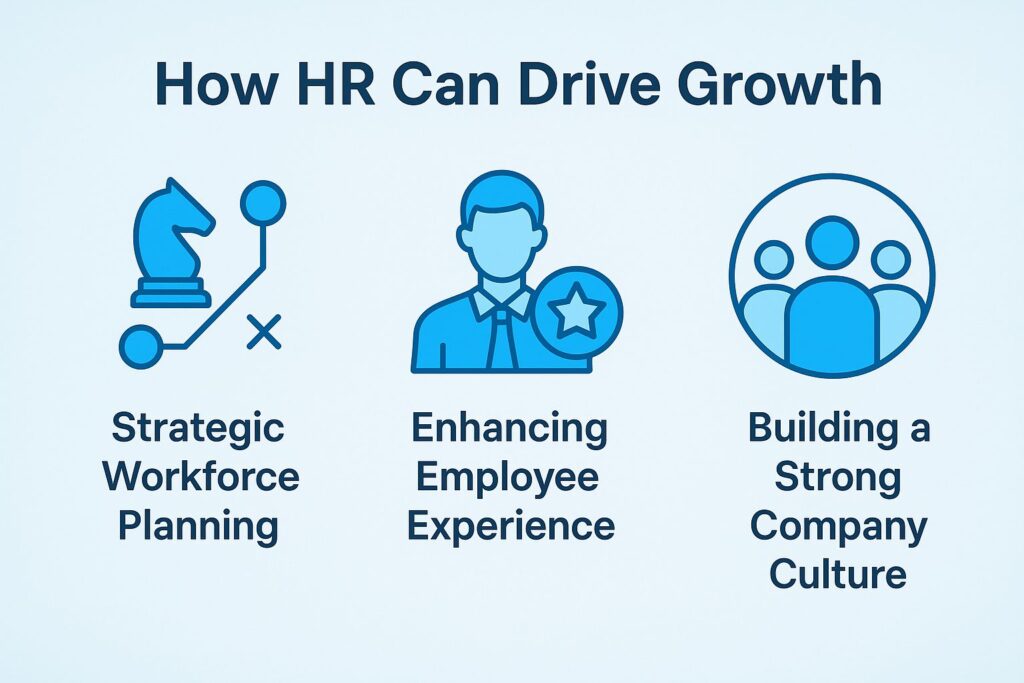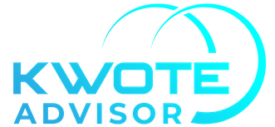
Is Your HR Department Hurting or Helping Your Growth?
Is your HR department a roadblock or a launching pad for growth? Knowing what HR does in your business can mean the difference between staying the same and achieving success. You’ll look into how HR roles affect important performance measures, employee involvement, and hiring. Also, find out about common mistakes that may be stopping your progress. Find out if your HR team is helping your success or holding you back. Your growth strategy, influenced by strategic human resource management, depends on it!
Importance of HR in Business Growth
HR helps businesses expand by involving employees through strategic workforce planning, which increases efficiency and lowers staff turnover rates by up to 25%.
Engaged employees are 17% more productive and 21% more profitable, highlighting the necessity of effective HR practices in improving workplace productivity.
Using regular feedback methods, like quarterly performance reviews and employee surveys, can greatly support creating a culture of involvement. Tools like 15Five or Officevibe can make it easier to gather feedback and improve communication.
Offering professional development opportunities, such as workshops or mentorship programs, further strengthens engagement. Companies that focus on these practices keep their employees and set themselves up for lasting growth. For an in-depth understanding of how outsourcing HR functions can also contribute to these goals, check out our related callout on HR outsourcing benefits.
Overview of HR Functions
HR encompasses essential functions such as recruitment, performance management, and employee development, each critical for nurturing talent.
Using tools like Greenhouse or Lever simplifies the hiring process and makes it better for candidates.
Performance management can improve with consistent feedback using tools like 15Five, which supports regular conversations between employees and managers.
Offering employee training programs like LinkedIn Learning or Coursera for Business encourages ongoing education.
By combining these functions, organizations bring in excellent candidates and keep their employees, helping them develop for lasting success.
Assessing HR’s Impact on Growth
Tracking the effect of HR on business growth involves monitoring specific Key Performance Indicators (KPIs) that show how involved employees are and how long they stay. Understanding the role of effective compensation packages in attracting and retaining employees can further enhance these metrics.

Key Performance Indicators (KPIs) for HR
Key HR metrics include turnover rate (ideally below 10%), employee satisfaction score (aim for 80%+), and time-to-hire metric (average 30 days).
To measure these HR metrics accurately, apply specific tools and methods.
- For turnover rate, divide the number of employees who left by the average headcount over a given period, then multiply by 100.
- Employee satisfaction can be gauged through surveys using tools like SurveyMonkey, focusing on key areas such as management support and work-life balance.
- To calculate the time-to-hire, count the days from when a job is advertised to when an offer is accepted. The aim is to make the process faster to reach a 30-day goal.
Regular reviews, aligned with goal alignment, will help maintain these standards.
Employee Engagement and Retention Rates
When employees are highly engaged, 70% tend to stay with the company, which greatly reduces hiring expenses and improves workplace spirit.
To build strong involvement, set up regular feedback meetings-these can be quarterly one-on-one sessions where employees talk about their progress and objectives.
Recognize achievements through programs like ‘Employee of the Month,’ which reinforces a culture of appreciation.
Use tools like TINYpulse or 15Five to gauge satisfaction anonymously and make adjustments based on real-time input.
Invest in professional development opportunities; providing pathways for growth makes employees feel valued and increases their commitment to your organization.
Recruitment and Talent Acquisition Metrics
Effective talent acquisition is tracked through metrics like cost-per-hire ($4,000 average) and quality-of-hire ratings (scale of 1-5).
- To improve your hiring methods, begin by tracking time-to-fill, which is the average number of days it takes to hire someone for a job. This period can differ by industry but usually falls between 30 to 45 days.
- Use applicant tracking systems (ATS) like Greenhouse or Lever to organize and examine your hiring information quickly.
- Gather feedback from new hires about their recruitment experience and employ structured interviews to improve quality-of-hire ratings.
- Benchmarking your metrics against industry averages can also spotlight areas for improvement and demonstrate the value of your talent acquisition efforts.
Common HR Pitfalls in Organizational Development
Finding typical HR mistakes helps organizations prevent errors that can block development and effectiveness. One common area of concern is payroll tax errors which can lead to significant issues with the IRS. Worth exploring: Payroll Tax Errors and How to Keep the IRS Off Your Back to ensure your organization remains compliant and efficient.

Misalignment with Business Goals
Misalignment can result in wasted resources, where 70% of HR initiatives fail to support core business objectives, affecting strategic planning.
To match HR plans with company aims, begin by carefully evaluating the company’s goals. Next, include important people from management and different departments to understand their objectives and issues.
Use tools like SWOT analysis to identify strengths, weaknesses, opportunities, and threats related to HR initiatives. Once you clearly know the topic, create a plan that includes specific HR numbers, like how well hiring is going and how many employees stay, matched with the company’s overall success measures.
Regularly check and change this plan to keep it working well.
Inefficient Recruitment Processes
Inefficient recruitment strategies can extend time-to-fill positions to 60 days or more, costing businesses thousands in lost productivity.
For simpler hiring, consider applicant tracking systems like Greenhouse or Lever. These tools help you manage candidates and handle communication automatically.
Automating initial screenings through tools such as HireVue can reduce the time spent on each applicant. Having a set interview process makes sure all candidates are judged the same way.
Working closely with hiring managers to improve job descriptions and requirements helps find suitable candidates faster, reducing the hiring process time considerably.
Implementing these strategies can cut time-to-fill by up to 30%, enhancing overall efficiency.
Poor Employee Development Programs
Lack of effective skill development programs can lead to employee disengagement, with 90% of employees indicating they want more training opportunities.
To increase participation, companies should use an organized method for training. Begin by assessing employee needs through surveys or one-on-one meetings to identify skill gaps.
Next, implement diverse training methods, such as online courses using platforms like LinkedIn Learning or interactive workshops with industry experts.
Create a mentorship program where newer employees are teamed up with experienced professionals to help develop their skills.
Regularly evaluate and update the training programs based on feedback and results. This method helps employees feel appreciated and supported in their career development.
How HR Can Drive Growth
HR can help businesses grow by planning for staffing needs and making employees’ experiences better. This can increase their loyalty and improve how they work. One important aspect of enhancing employee experience is providing attractive compensation packages. Learn more about how compensation packages can attract and retain employees to boost loyalty and performance.

Strategic Workforce Planning
Strategic workforce planning can cut staffing expenses by 20% and makes sure important positions are filled quickly, improving workforce management.
To effectively plan your staff needs, begin by forecasting the talent your organization will need. Use Workforce Planning Software such as SAP SuccessFactors or Workforce.com to examine data patterns and predict needed skills.
Regularly check employees’ skills by using surveys or performance reviews to find any weaknesses. To build a strong strategy, develop a system to recruit and train people actively.
For example, if you expect to require software developers, think about training your current team or working with local schools to develop new skills.
Enhancing Employee Experience
Enhancing employee experience leads to a 30% increase in productivity and a marked improvement in job satisfaction ratings.
To achieve this, organizations can implement flexible work arrangements, such as remote options or compressed work weeks, allowing employees to manage their time effectively.
Setting up programs to recognize employees, such as monthly awards for great work, helps create a culture where people feel valued.
Tools like anonymous surveys and personal meetings are important because they allow employees to share their thoughts about their workplace.
When companies focus on these strategies, they can create a positive environment that improves both performance and team spirit.
Building a Strong Company Culture
A strong company culture, aligned with organizational behavior, can increase employee morale by 50%, contributing to lower turnover rates and higher performance.
To create a lively company environment, begin by clearly setting out your main principles. For example, Patagonia focuses on being environmentally friendly, which is clear in how they hire and their actions for the environment.
Next, involve employees by creating feedback loops; consider Google’s use of employee surveys to gauge sentiment and improve policies.
Recognize and celebrate contributions through programs like employee of the month or team outings, as seen at Zappos. This approach helps your team work together towards shared goals, creating a sense of belonging and commitment.
Case Studies
Looking at real-world examples shows both successful HR changes and what struggling departments have learned.
Successful HR Transformations
XYZ Company, for example, saw employee turnover decrease by 40% and their HR department became more efficient after they significantly changed their HR practices.
Similarly, ABC Corp achieved a 35% increase in employee engagement and better workforce optimization through the introduction of a performance management tool, like Lattice, which tracks individual goals and offers real-time feedback.
They used BambooHR’s analytics to spot patterns in employee turnover, which helped them take early action.
By investing in continuous learning opportunities via platforms like LinkedIn Learning, DEF Inc. Increased internal promotions by 50% and improved human resources plans.
Each organization showed that using HR technology and feedback systems improves employee retention and creates a more engaged and motivated team.
Lessons from Companies with Struggling HR Departments
Companies like ABC Corp faced a 30% drop in productivity due to ineffective HR strategies, highlighting the need for improved leadership development and providing critical lessons in HR management.
To overcome such challenges, businesses should prioritize communication and clarity in their HR policies.
Regular employee feedback sessions can greatly improve how involved employees feel in their work. Tools like Officevibe or TINYpulse help collect anonymous feedback, allowing HR to identify areas needing improvement.
Creating a clear onboarding process helps new employees learn about the company’s values and what is expected from them, which can lower employee turnover and increase loyalty.
By using technology and encouraging transparency, companies can improve their work environment and create a more engaged workplace, eventually increasing productivity.
Tools and Technologies for Effective HR
Using HR technology can make processes faster, improve how data is used, and increase employee involvement with different tools, aiding workforce analytics. Exploring solutions like the best payroll service for small businesses (our parenthetical guide highlights key services) can be integral to optimizing HR processes.

HR Software Solutions
Popular HR software solutions like BambooHR ($99/month) and Gusto ($39/month + $6/employee) simplify HR tasks while improving overall efficiency.
Workday ($100+/month) is another powerful option, particularly favored by larger enterprises for its scalability and advanced reporting features.
When selecting a tool, think about your company size: BambooHR works well for small to medium businesses that need simple HR management, while Gusto fits startups that need payroll features. Conversely, Workday best serves companies with complex needs and a larger workforce.
Learn what your organization needs to run smoothly and make it simple for users to find their way around.
Data Analytics in HR
HR departments use data analytics tools like Tableau and Visier to monitor HR metrics and make decisions based on past information.
By focusing on specific measurements, HR can greatly improve how it makes decisions.
For instance, tracking employee turnover rates can reveal patterns related to job satisfaction or management effectiveness. Studying recruitment metrics helps identify the best ways to hire.
Using tools like Google Analytics can improve hiring strategies by showing candidate demographics. Establishing a data-driven culture allows HR to make proactive decisions, improving overall workforce management and retention rates.
Evaluating Your HR Department
Begin your HR evaluation by assessing current performance against established KPIs and identifying gaps in strategy alignment, focusing on process improvement.
Start by collecting quantitative data on KPIs such as employee turnover rates, time-to-fill positions, and employee satisfaction scores. Tools like BambooHR and Gusto offer useful data for these metrics.
Next, gather feedback on HR initiatives by using employee surveys and focus group discussions. Compare these findings with industry benchmarks to gauge performance.
Develop a plan to tackle the gaps found, focusing on projects that match your organization’s key goals to improve overall performance.
Next Steps for Improvement
Putting a clear plan into place can make HR work better and match with business goals through definite steps.
- Start by doing a SWOT analysis to find out the strengths, weaknesses, opportunities, and threats in your HR processes, leading to better compliance and change management.
- Following that, set measurable objectives like improving employee retention strategies by 15% in the next 12 months.
- Use tools like BambooHR to monitor employee satisfaction surveys and performance measurements.
- Schedule quarterly reviews to assess progress and adjust strategies accordingly.
- Getting your team involved in this process will help gain support, promote teamwork and collaboration, leading to effective execution and continuous improvement.
Final Thoughts on HR and Growth
As businesses change, HR needs to stay a key player in promoting growth by using new methods and technology.
To achieve this, HR can use tools like performance management software such as Lattice, which helps with regular employee feedback, job performance appraisal, and goal tracking.
Using applicant tracking systems (ATS) like Greenhouse makes hiring easier and improves the process of finding new employees. Embracing learning management systems (LMS) like TalentLMS can support ongoing employee development.
By using these technologies, HR moves away from routine tasks to pay attention to important projects, building a culture of ongoing growth, new ideas, and organizational culture that is key for long-term business success.
About the Author
Ethan Cole is a business growth advisor and serial entrepreneur with over two decades of hands-on experience helping startups and small businesses thrive. With a background in finance and operations, he’s led multiple companies from early-stage concepts to multi-million-dollar exits. Ethan specializes in scaling strategies, cost reduction, and building systems that support sustainable growth. As a content contributor for Kwote Advisor, he shares practical insights to help business owners make smarter decisions when launching, managing, and expanding their ventures.



